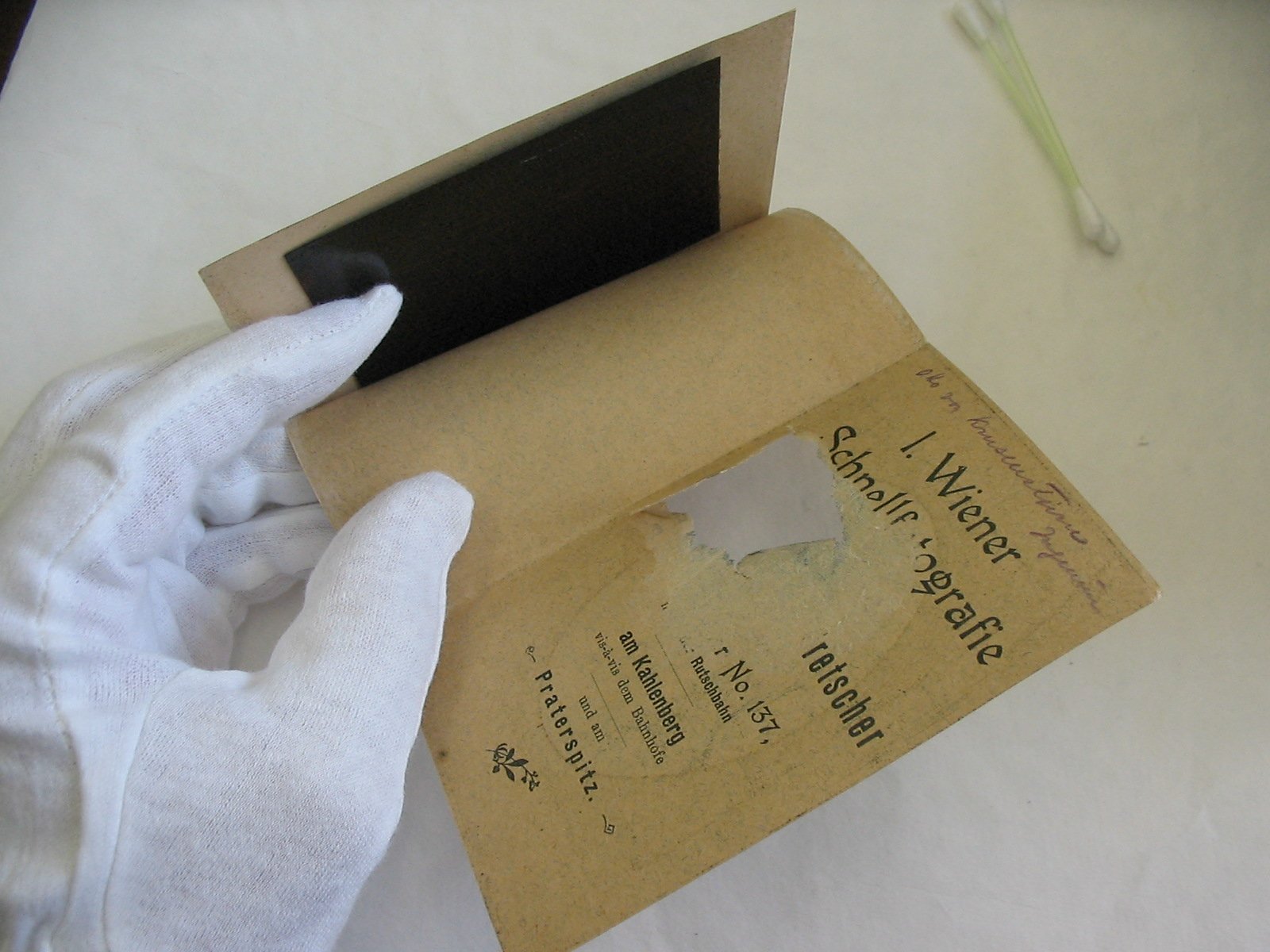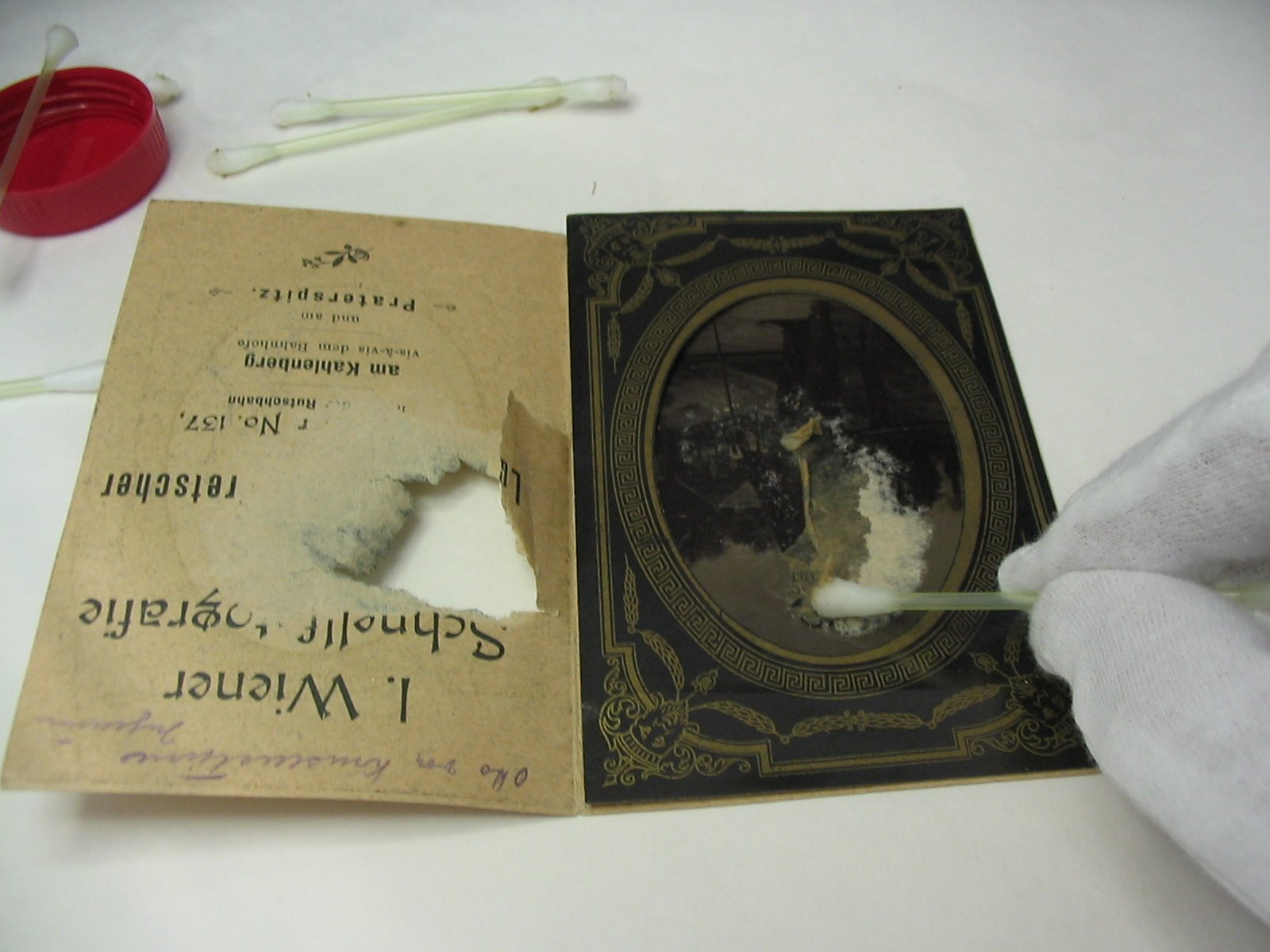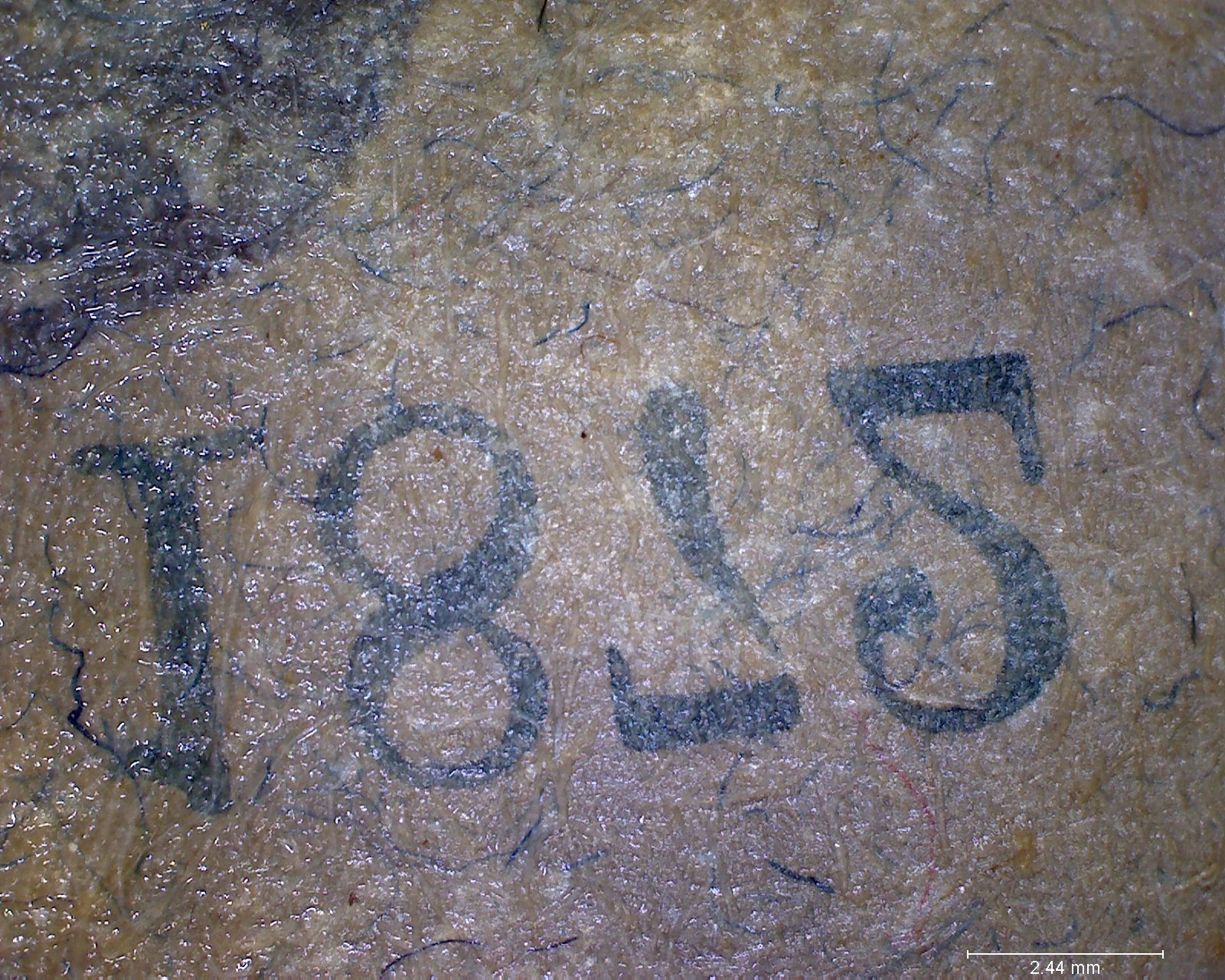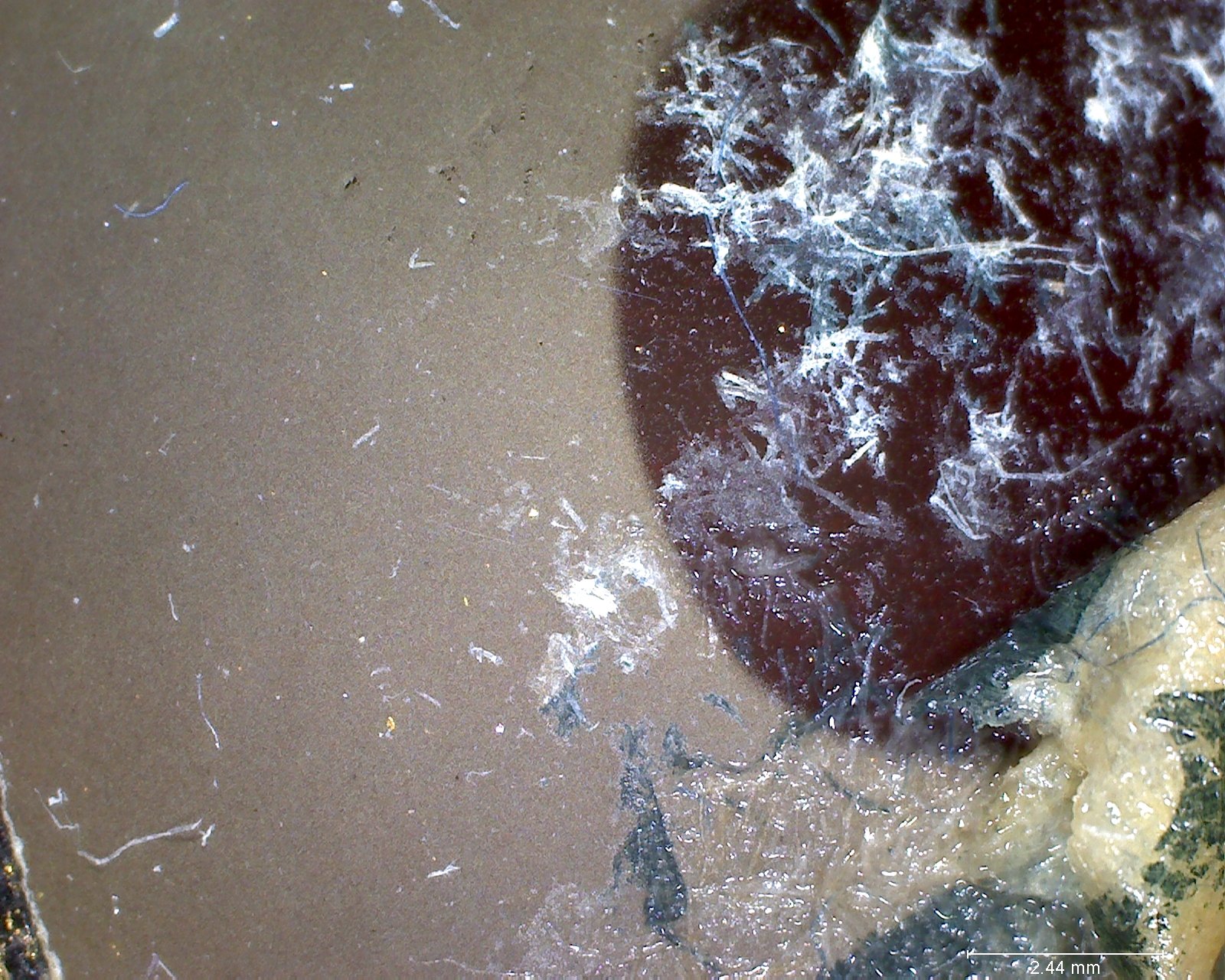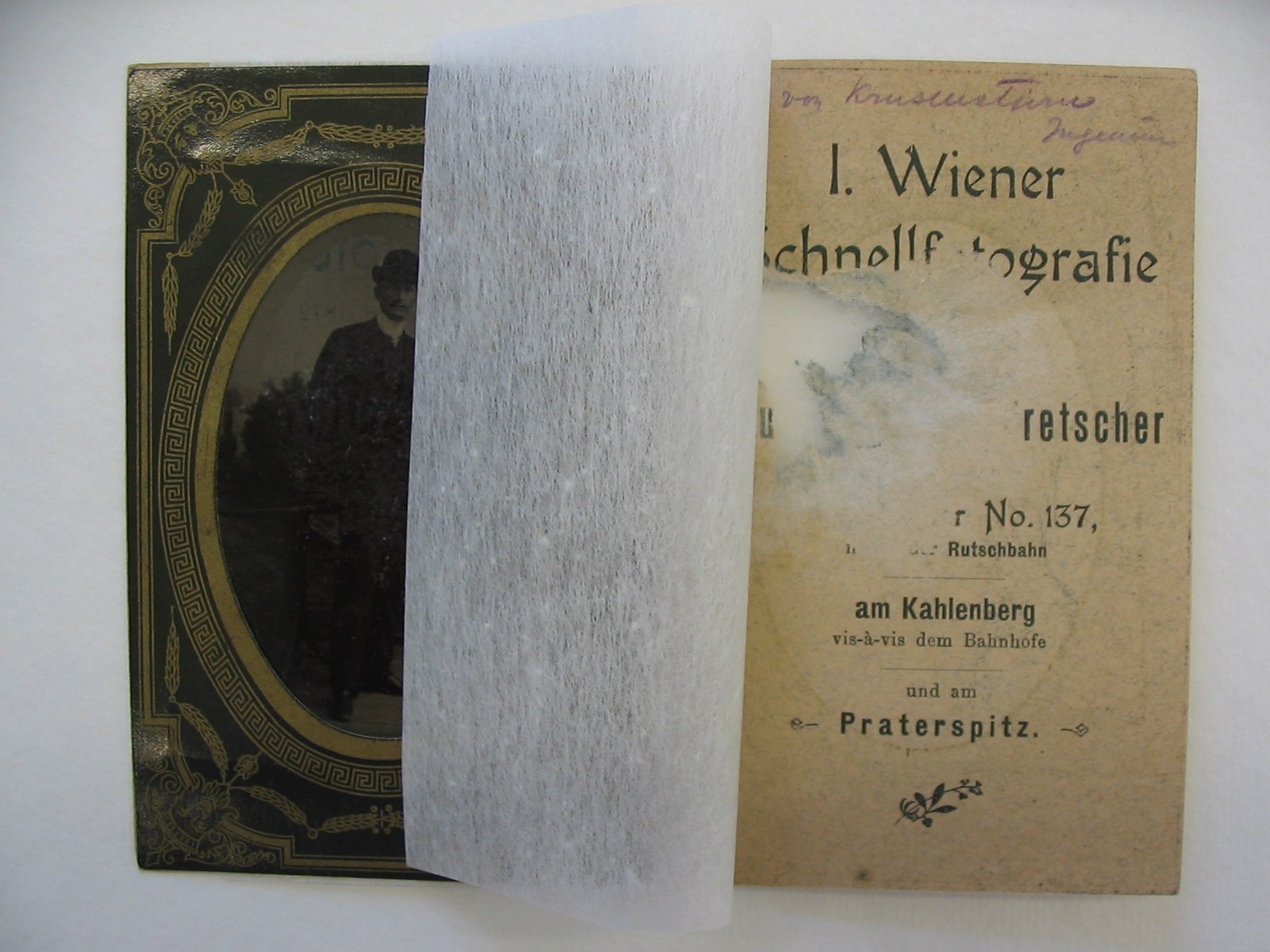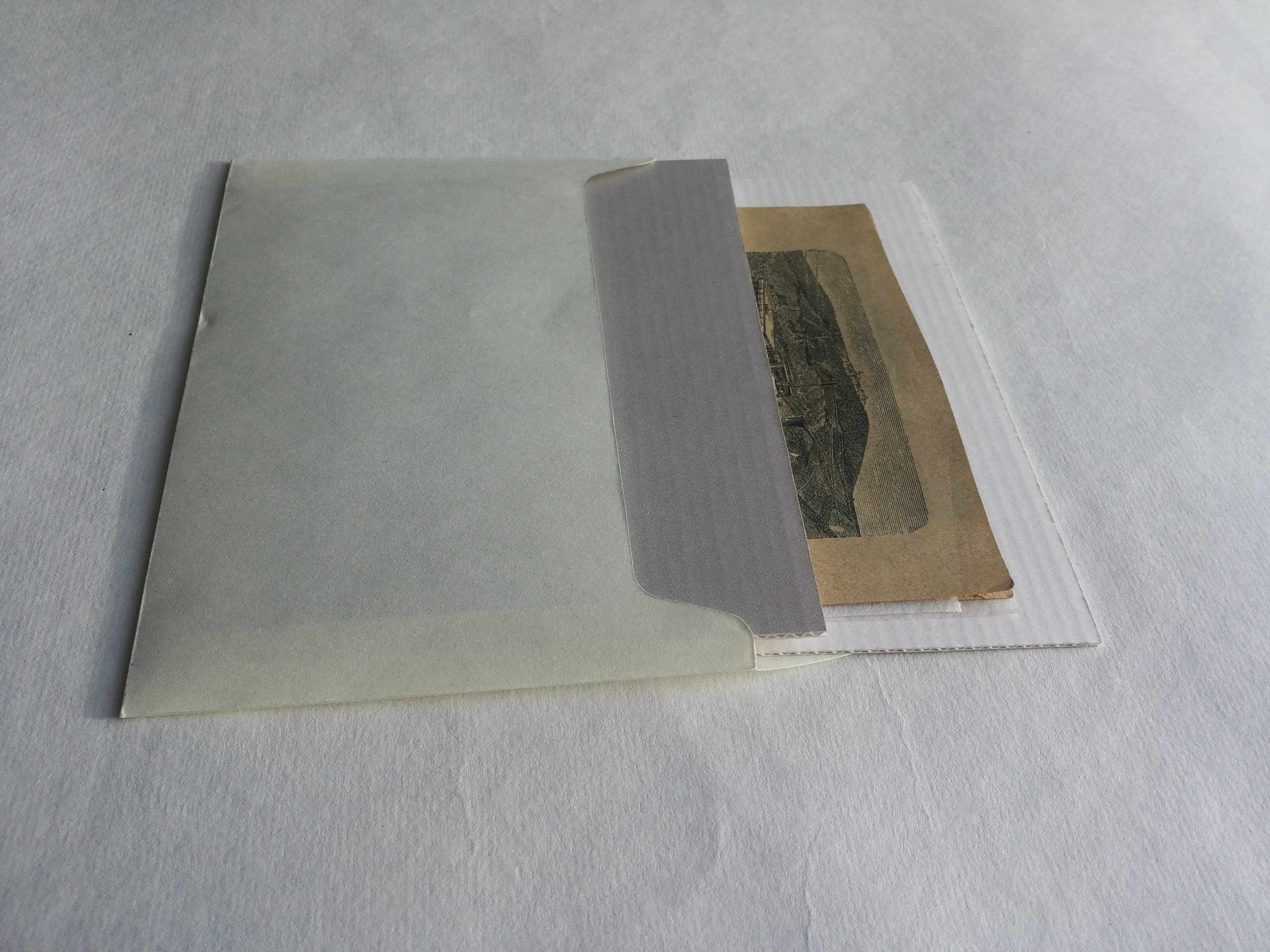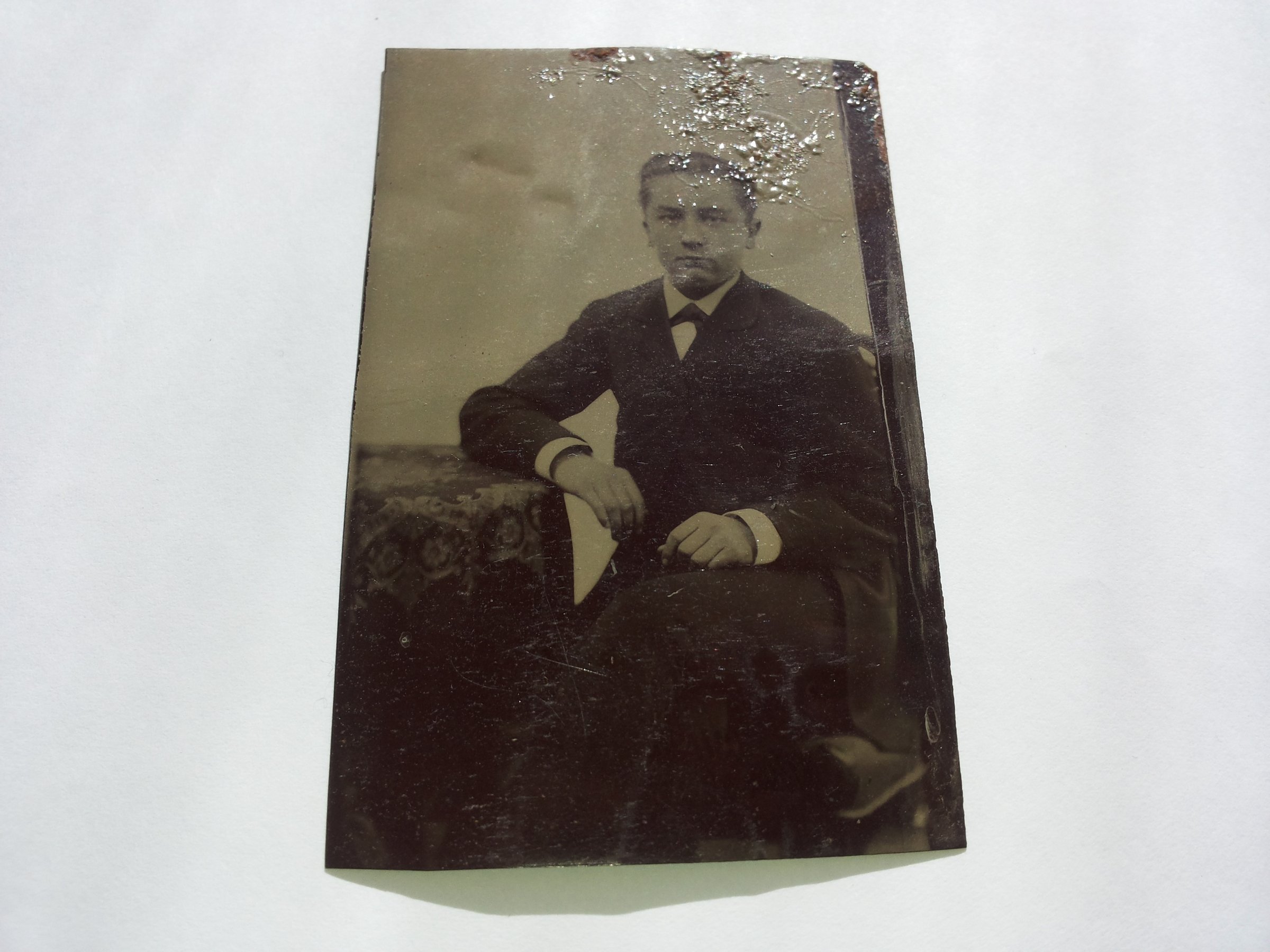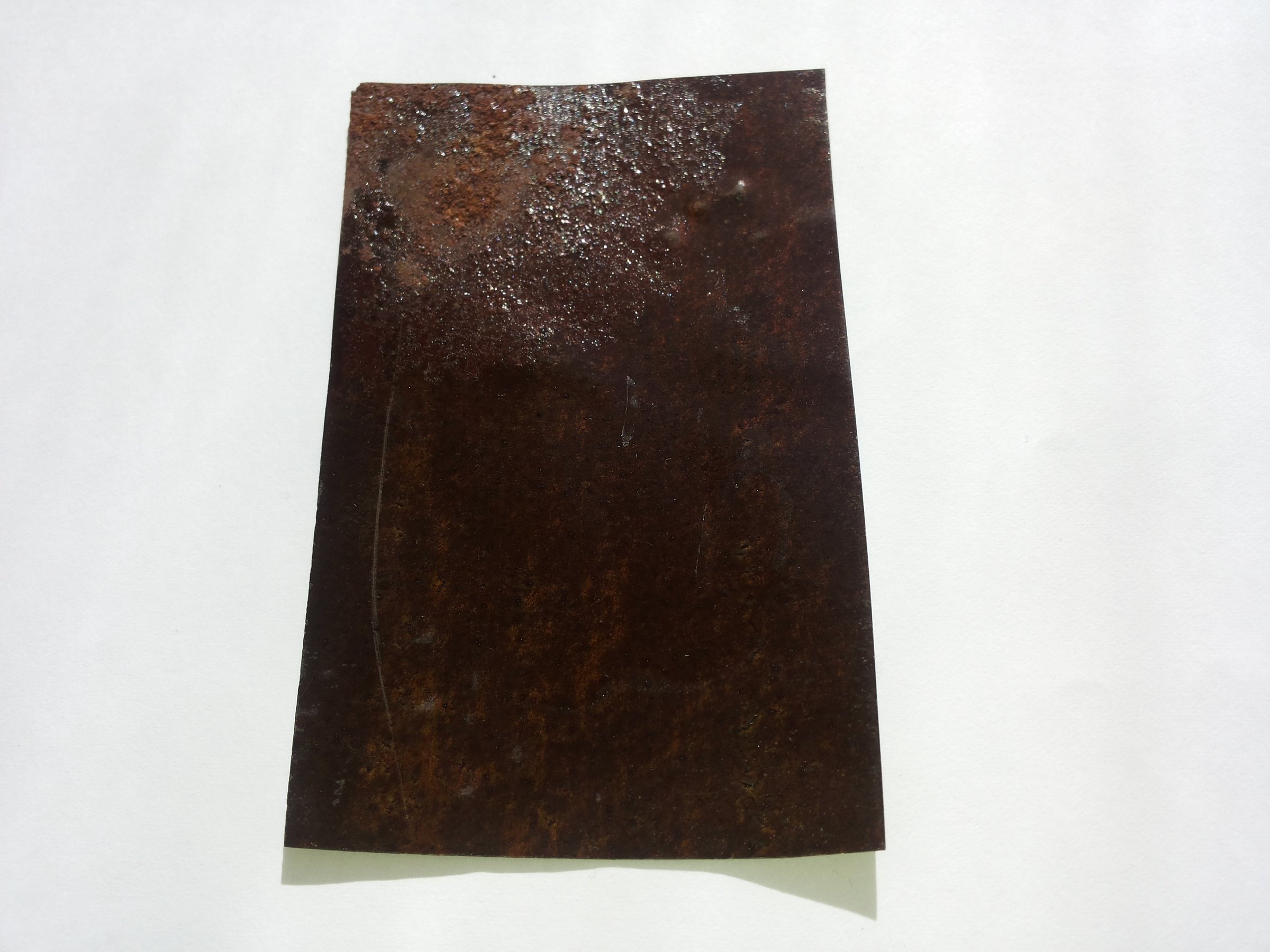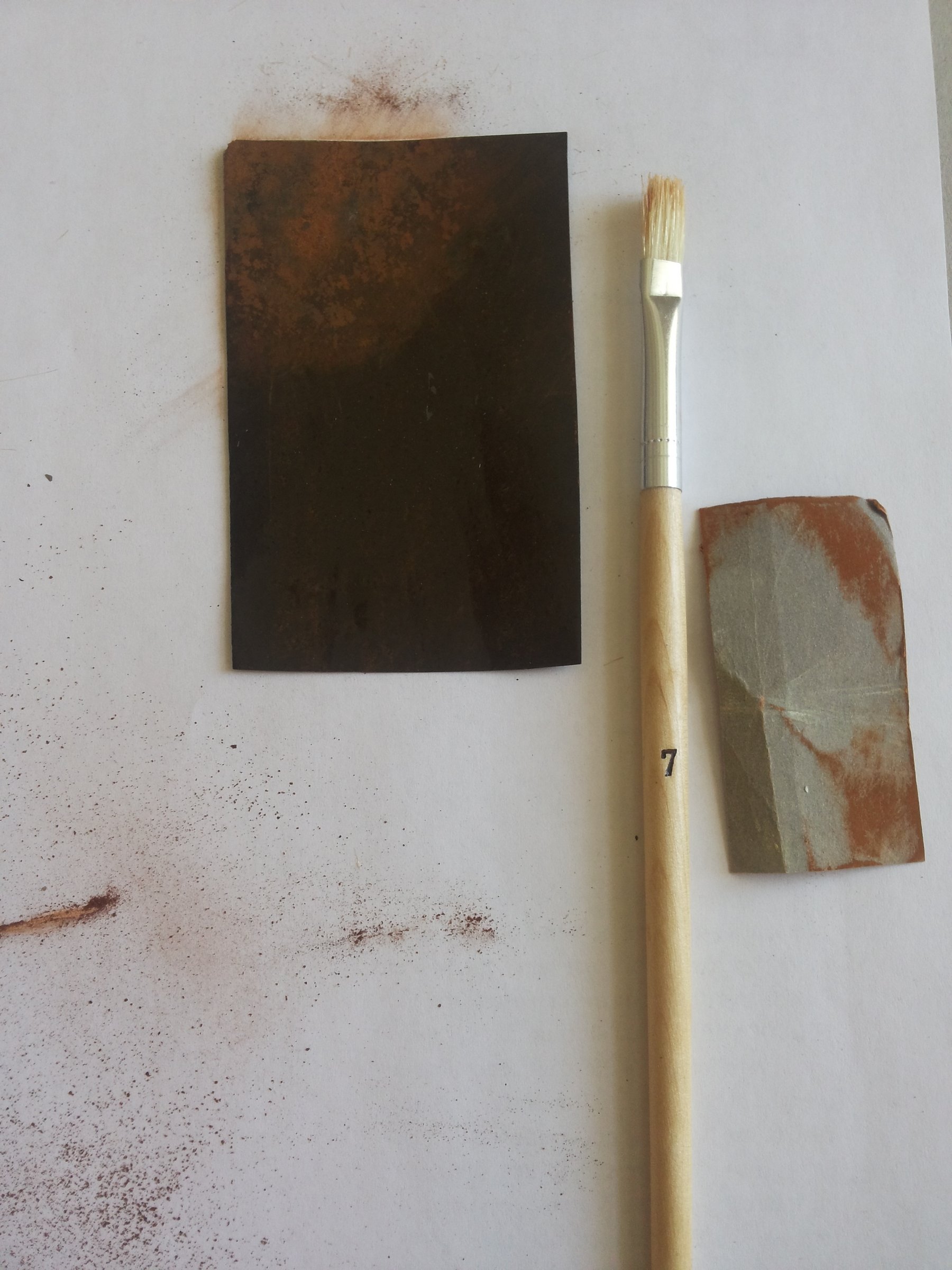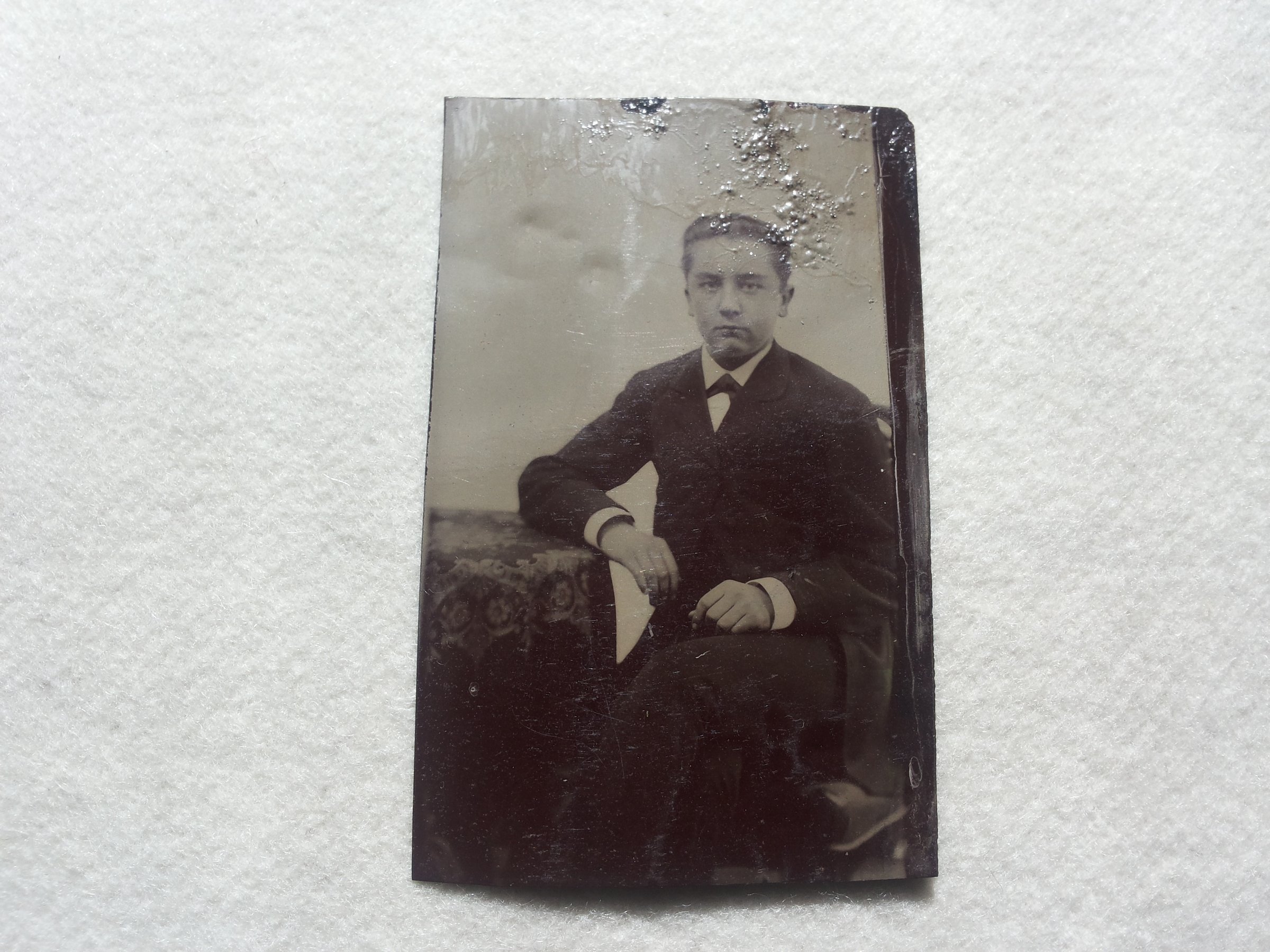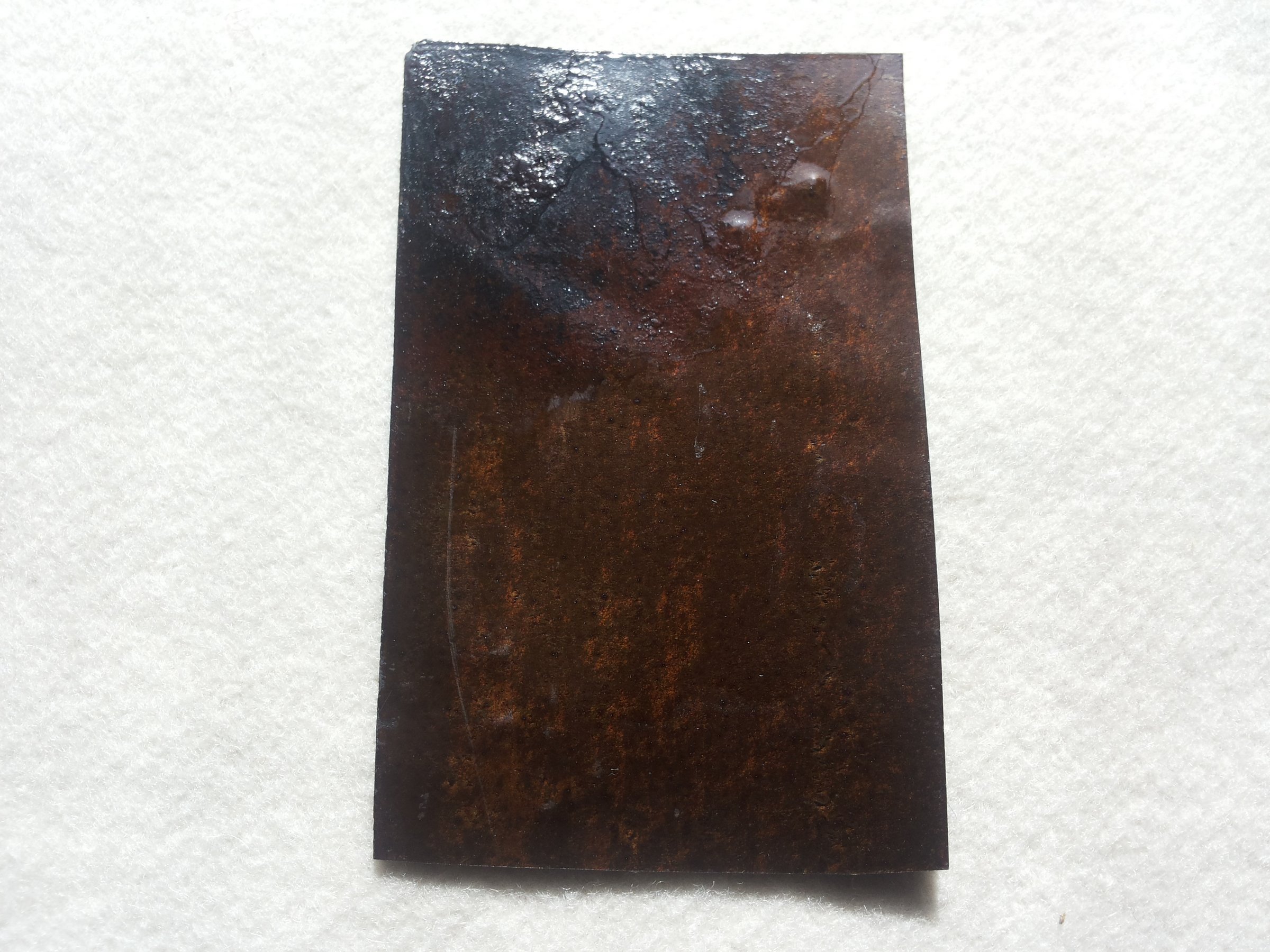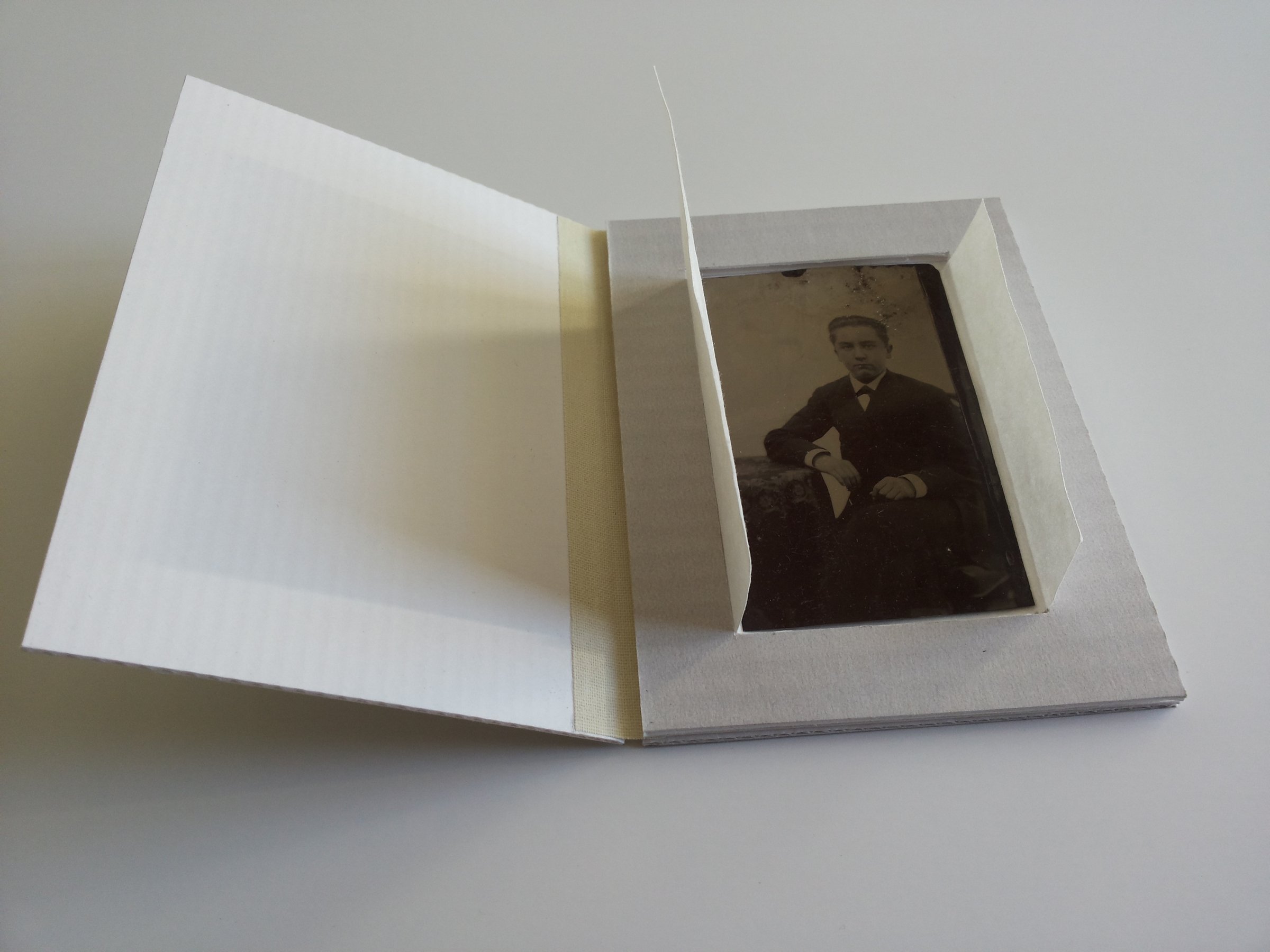CONSERVATION AND PREPARATION FOR DIGITISATION OF TWO FERROTYPES
Autor:
Jaan Lehtaru
Year:
Anno 2015
Category:
Conservation
A ferrotype, also known as a tintype, melainotype or lettertype, is a wet collodion based image on thin, blackened, iron plate. The dark background gave the resulting image the appearance of a positive. Ferrotype images are laterally reversed, as in a mirror. Ferrotypes were sometimes put into paper or cardboard mounts like daguerrotypes. The process was first described by Adolphe-Alexandre Martin in 1853 but it was first patented in 1856 by Hamilton Smith in America.
Ferrotypes became very popular in the United States during the American Civil War. The technique was also widely used among the street photographers. Ferrotypes remained popular until the 1900s and as late as the 1930s in different parts of the world. It is estimated that nearly a hundred ferrotypes have been preserved in Estonia and 12 of them belong to the collections of the National Archives.
This article is focused on the conservation of two ferrotypes. Different damages were observed on these two objects. Sticking of the original mounting paper into the emulsion layer was the main conservation problem in the case of the first ferrotype (ill 1-2). A fragment of the mounting paper was successfully removed by destilled water (ill 3-5) and the image became fully visble (ill 6). On the second object the rust and emulsion layer damage prevailed (ill 8-9). The rust powder was mechanically removed with great caution (ill 10). The iron support was treated with tannic acid and emulsion layer was fixed with Paraloid B-72 (ill 11-12). Both ferrotypes were digitized and mounted using archival quality materials (ill 7, 13).
REFERENCES:
1. Tintype photography and preservation. https://preprints.wordpress.com/2012/06/17/1982/ (3.03.2015).
2. J. M. Reilly. Care and Identification of 19th-century Photographic Prints. Kodak Publications. USA, 1986, 116 lk.
3. B. Lavédrine. Photographs of the Past. Process and Preservation. The Getty Conservation Institute. Los Angeles, 2009, 352 lk.
4. K. Sikka, M. Roosalu. Märgkolloodiummenetlus. Teavik. MTÜ Eesti Fotopärand, 2014.
http://fotoparand.org.ee/wp/wp-content/uploads/2015/01/Kolloodiummenetlus_teavik_2014.pdf
(3.03.2015).
5. K. Sikka, T. Virves. Märgkolloodiummenetluse õpitoad „Päewapildi õpetus“ Tallinnas ja Tartus. http://fotopärand.org.ee/wp/2014/11/paewapildi-opetusest-sai-osa-50-huvilist/ (3.03.2015).
6. Märgkolloodiummenetlus (viide 4).
7. B. Lavédrine (viide 3).
8. J. Chen. The „Perfect“ Fill for the Magnificant Tintype. Topics in Photographic Preservation. AIC, 2001 (9).
http://media.wix.com/ugd/750e25_cad02f43422c495da8bc8b2f50a0df9e.pdf (3.03.2015).
9. B. Lavedrine. A Guide to the Preventive Conservation of Photograph Collections. The Getty Conservation Institute. Los Angeles, 2003, 286 lk.


